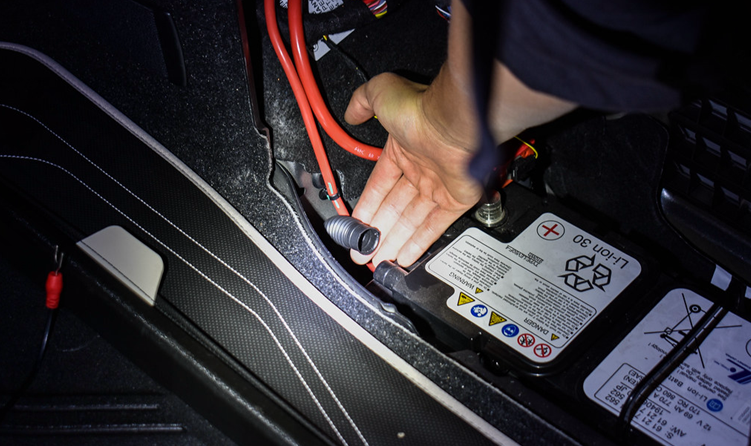Comparing the Performance of LiFePO4 Batteries: A Comprehensive Chart
With the increasing demand for energy storage solutions, lithium iron phosphate (LiFePO4) batteries have emerged as a popular choice due to their high energy density, long cycle life, and inherent safety features. However, with various manufacturers and suppliers offering LiFePO4 batteries with different specifications and performance metrics, it can be challenging to compare and choose the right battery for a specific application.
To help make an informed decision, we have compiled a comprehensive chart that compares the performance of various LiFePO4 batteries based on key parameters such as capacity, voltage, cycle life, and operating temperature range. The chart includes batteries from well-known manufacturers such as Winston, CALB, and Sinopoly, as well as newer entrants in the market.
Capacity is one of the most critical parameters to consider when selecting a LiFePO4 battery, as it determines the amount of energy the battery can store. Our chart lists the nominal capacity of each battery, which is typically measured in ampere-hours (Ah). We have also included the energy density of each battery, which is the amount of energy stored per unit of volume or weight. The energy density is a crucial factor for applications where weight and size are critical, such as in electric vehicles and portable electronics.
Another critical parameter to consider is voltage, as it determines the voltage range that the battery can discharge at. Our chart lists the nominal voltage of each battery, which is typically 3.2 or 3.3 volts per cell. We have also included the maximum charging voltage and the discharge cut-off voltage, which are essential for ensuring safe and efficient operation of the battery.
Cycle life is another critical parameter to consider, as it determines the number of charge and discharge cycles a battery can withstand before it degrades significantly. Our chart lists the estimated cycle life of each battery, which is typically measured in thousands of cycles. We have also included the depth of discharge (DoD) for each battery, which is the percentage of the battery’s capacity that can be discharged before recharging it. A higher DoD means that more energy can be extracted from the battery before recharging it, but it also reduces the battery’s cycle life.

Operating temperature range is also an important parameter to consider, especially for applications where the battery is exposed to extreme temperatures. Our chart lists the recommended operating temperature range for each battery, which is typically between -20°C and 60°C. We have also included the temperature coefficient for each battery, which is the rate at which the battery’s capacity and voltage change with temperature. A battery with a low temperature coefficient will perform better in extreme temperatures than a battery with a high coefficient.
In conclusion, our comprehensive chart provides a useful tool for comparing the performance of various LiFePO4 batteries based on critical parameters such as capacity, voltage, cycle life, and operating temperature range. By using this chart, you can make an informed decision and select the right battery for your specific application.
-
 In today's fast-developing technological era, lithium batteries, as a leader in the field of energy storage, are leading the wave of global energy transition and green development. In order to help you better understand lithium batteries, this article will thoroughly explore their working principle, application field, technological progress, and future development trends to provide you with strong support for your...Read more
In today's fast-developing technological era, lithium batteries, as a leader in the field of energy storage, are leading the wave of global energy transition and green development. In order to help you better understand lithium batteries, this article will thoroughly explore their working principle, application field, technological progress, and future development trends to provide you with strong support for your...Read more -
 As more and more businesses and homes rely on backup power systems for emergency situations or everyday use, the demand for reliable and long-lasting batteries is increasing. One type of battery that is gaining popularity for backup power systems is the Lifepo4 battery, known for its high energy density, long cycle life, and safety features. If you are looking...Read more
As more and more businesses and homes rely on backup power systems for emergency situations or everyday use, the demand for reliable and long-lasting batteries is increasing. One type of battery that is gaining popularity for backup power systems is the Lifepo4 battery, known for its high energy density, long cycle life, and safety features. If you are looking...Read more -
 The LiFePO4 battery, also known as the lithium iron phosphate battery, is a type of rechargeable battery that has been gaining popularity in recent years. Unlike traditional lead-acid batteries, LiFePO4 batteries are much lighter, more efficient, and have a longer lifespan. One of the main benefits of LiFePO4 batteries is their high energy density. This means that they can...Read more
The LiFePO4 battery, also known as the lithium iron phosphate battery, is a type of rechargeable battery that has been gaining popularity in recent years. Unlike traditional lead-acid batteries, LiFePO4 batteries are much lighter, more efficient, and have a longer lifespan. One of the main benefits of LiFePO4 batteries is their high energy density. This means that they can...Read more -
 Introduction In the world of automotive engineering, battery technology has come a long way. With the rise of electric and hybrid vehicles, the need for high-performance, lightweight battery systems has never been greater. Lithium starter batteries are becoming increasingly popular among performance enthusiasts and professional racers due to their unparalleled power-to-weight ratio and exceptional durability. In this article, we will...Read more
Introduction In the world of automotive engineering, battery technology has come a long way. With the rise of electric and hybrid vehicles, the need for high-performance, lightweight battery systems has never been greater. Lithium starter batteries are becoming increasingly popular among performance enthusiasts and professional racers due to their unparalleled power-to-weight ratio and exceptional durability. In this article, we will...Read more -
 Industrial Power Products Batteries, also known as IPP Batteries, are essential components in various industries. These batteries are designed to provide reliable and long-lasting power for industrial applications. With their advanced technology and superior performance, IPP Batteries have become a preferred choice for many businesses around the world. One of the key features that set IPP Batteries apart from...Read more
Industrial Power Products Batteries, also known as IPP Batteries, are essential components in various industries. These batteries are designed to provide reliable and long-lasting power for industrial applications. With their advanced technology and superior performance, IPP Batteries have become a preferred choice for many businesses around the world. One of the key features that set IPP Batteries apart from...Read more -
 In today's fast-paced and technology-driven world, the demand for efficient and sustainable energy sources is on the rise. As traditional energy grids struggle to keep up with the increasing energy demands, the concept of smart grids has gained significant attention. Smart grids aim to optimize energy distribution and consumption through advanced technologies and innovative solutions. One such solution that is...Read more
In today's fast-paced and technology-driven world, the demand for efficient and sustainable energy sources is on the rise. As traditional energy grids struggle to keep up with the increasing energy demands, the concept of smart grids has gained significant attention. Smart grids aim to optimize energy distribution and consumption through advanced technologies and innovative solutions. One such solution that is...Read more -
 The power sector has long been dependent on traditional energy sources such as fossil fuels and nuclear power. However, with the increasing concerns about climate change and the depletion of natural resources, there is a growing need for alternative and sustainable energy solutions. In this regard, battery industrial has emerged as a game-changer, revolutionizing the power sector with innovation and...Read more
The power sector has long been dependent on traditional energy sources such as fossil fuels and nuclear power. However, with the increasing concerns about climate change and the depletion of natural resources, there is a growing need for alternative and sustainable energy solutions. In this regard, battery industrial has emerged as a game-changer, revolutionizing the power sector with innovation and...Read more

